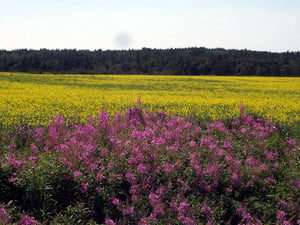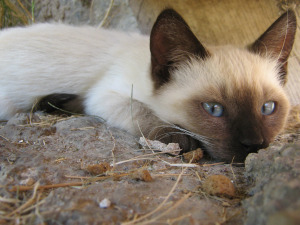The natural phenomena of our planet can come in a variety of forms. Aristotle once divided the elements into four basic units of earth, water, wind and fire. Scientists have improved on this basic theory, but as our scientific knowledge has grown, many naturally occurring events, like light are best explained with a binary definition. Then there is the triad approach, which defines a particular subject area, as three similar things that can be considered as a unit.
Formation of Rocks
Rocks of the earth can be formed through three basic geologic processes: igneous, sedimentary and metamorphic. Igneous rocks are created by volcanic activity, while sedimentary rocks form from the deposition of silt and sand in ocean basins. Finally there is the metamorphic process, which involves the uplifting of already existing rock material to form a new substance that is created under great pressure and stress. These latter types of rocks go by such names as schists, gneiss, marble, slate or quartzite.
What is most important about these three terms is that they are not static, but that they define the process by which rocks are created and changed. For example, limestone is created through the sedimentary process, but can be changed into marble by the metamorphosis.
Three States of Matter
Life on earth depends on the presence of water. This precious mineral is required by all living organisms as a condition for life and also plays an important role in shaping the face of our planet. It is naturally present on earth in all three states of matter, liquid, solid and gas.
This is a rather rare event for most natural compounds only exist in one or two states. Carbon dioxide, another gas of the atmosphere, occurs only in its gaseous form. Dry ice, which is solid carbon dioxide in its solid form, can only be created under artificial conditions, but when left at room temperature, it converts directly to the gaseous form.
Classification of Multi-cellular Organisms
When living organisms were first classified scientifically in the 18th century, all living things were divided into just two categories, plants and animals. Nowadays, modern taxonomists have expanded on the binary classification system to include three types of multi-cellular organisms and two types of one-celled living entities. If you just just look at the larger grouping of plants and animals, you will see that the old 18th-century plant grouping has been divided into two distinct groups, green plants and fungi.
Science classes can be lead in a detailed discussion as why fungi are placed in a separate category from green plants. This discussion should focus on the presence of chlorophyll and photosynthesis in green plants. Fungi lack this basic ingredient of plant life, so they must obtain their nutrients from decaying organic matter. Also of importance is an introduction to the concept of producers, consumers and decomposers as a means of explaining plants, animals and fungi and how they function.


